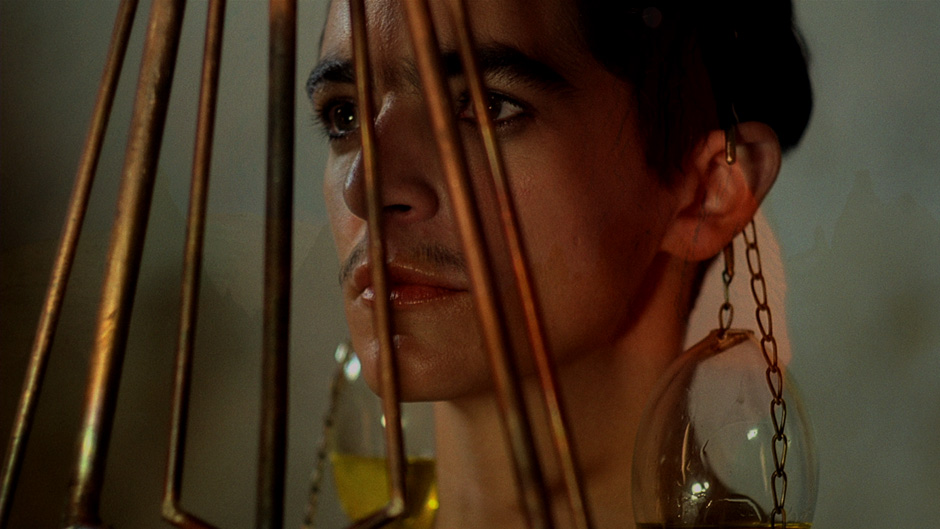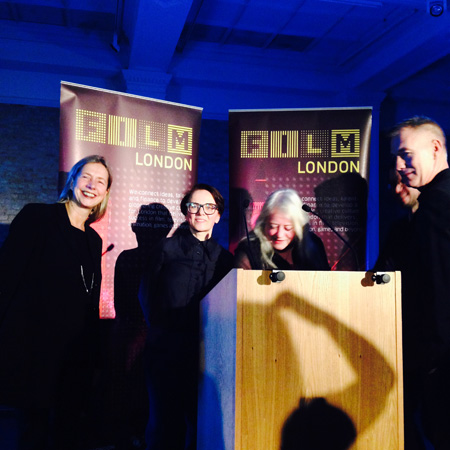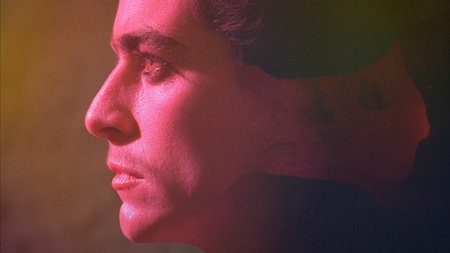The winner of the 2014 Jarman Award on her affinity with the iconic filmmaker Derek Jarman and how she’s going beyond binaries of gender and sexuality with her work

Last week, for the third year running, a visual artist won the Turner Prize and it seems that the visual arts are increasingly moving to the fore of the British art scene as the most innovative and dynamic art form. Launched in 2008, the Jarman Award – founded in honour of avant-garde British filmmaker Derek Jarman – recognises the work of artists whose films defy traditional categorisation. Marking the 20th anniversary of Jarman’s death, it seems fitting that this year’s prize was awarded to Austrian-born, London-based artist Ursula Mayer. Her practice, like Jarman’s, uses a cross-pollination of source materials, semiotics and references from archaeology, mythology geology, fashion, film and literature.

“There’s liquidity in those images, and it’s this liquidity that allows you as the spectator to experience aspects of cinema in an abstract manner, arousing elements to inspire you to let go of your personal, social definitions and become as crystalline as a cinematic image itself”
TRAILER GONDA from ursulamayer on Vimeo.

It’s also fitting that Jarman’s work inspired Mayer as she was developing her own practice over the last decade. “He’s very important in terms of his sexual politics: his voice mixed politics with poetic elements, performance and literature” Mayer says. “I watched a lot of his films, Jarman is an outstanding voice in the way how independently he produced them. He was never a mainstream artist: neither in his subject and the performers he used; nor in the way he worked with expressive elements of cinema and sound mixed with daily politics. His work is imbued with painterly, cinematic qualities.
It is this multiplicity that links the pair, these “beautiful layers of possibility” and abstraction. Like Jarman, whose work rallied against the political systems and social classes of the 1970s and 80s, Mayer’s work is politically deconstructing reductive and constrictive binaries of gender, sexuality and race. “I try to go a step further” she explains, “I’d really like to challenge the spectator with gestures that extend beyond binary systems and instead open up a space in between. We can even think about this space in between without borders and achieve multiplicity, where we have a much bigger range of ways in which to do and see things. I try to think outside descriptive bodies.”
Mayer adds, “Coming back to Jarman’s work, there’s a quality where images travel in an abstract way. There’s liquidity in those images, and it’s this liquidity that allows you as the spectator to experience aspects of cinema in an abstract manner, arousing elements to inspire you to let go of your personal, social definitions and become as crystalline as a cinematic image itself.”
These binaries of male and female, black and white, gay and straight are all narrow issues that are left behind through her work. For her film Gonda – named after Kay Gonda, the 1930s film star protagonist of Ayn Rand’s play, Ideal – Mayer worked with Dutch transgender model Valentijn de Hingh, circumventing a limited gender casting and making a pointed comment on the traditional gender stereotypes perpetrated by the mainstream film industry. Built up as a counter position to Ayn Rands’ authority, the film employs contrasting filmic devices to destroy what Mayer calls “idology in filmic grammar”. Written by Maria Fusco – the Whitechapel Gallery’s inaugural Writer in Residence, and the former Director of Art Writing at Goldsmiths – the film deals with many themes, including (amongst others) ideas of beauty, sexuality, gender and sex. “Valentijn is really an amazing human whose consciousness is expressed in gender fluidity. She stands in that betweeness. She is an amazing collaborator and a perfect canvas for these ideas.”
For Medea, shown as part of the touring Jarman Award Film Programme, Mayer cast queer activist and musician JD Samson as her protagonist. Both Samson and de Hingh combine ‘masculine’ and ‘feminine’ traits, physically embodying this subversion of categorisation and the politics running through Mayer’s work. Mayer concludes, “It is an approach to filmmaking that challenges viewers to lose pre-existing modes of understanding whilst empowering a more open interpretation. I work a lot with how we can liquefy bodily physics, and see a more fluid grammar.”
With her prize money, she’s turning her attention to a new film project and says she would like to continue her collaboration with de Hingh going forward. But she’s not in any rush. “The last two films I made were a big leap forward; they really took my work somewhere new. I have ideas which are waiting to be developed further. Future work will use more narrative concerning post-humanist conditions – we as humans are moving forward at such speed, I think these are in some way the stories of our times and I am keen to explore them.”
Though the project itself is evolving, it is certain that her next piece of work will continue to subvert and defy categorisation, just like her protagonists, and just like her genre.
Read more on Derek Jarman’s legacy from our archive and an interview with 2012 winner Richard James




